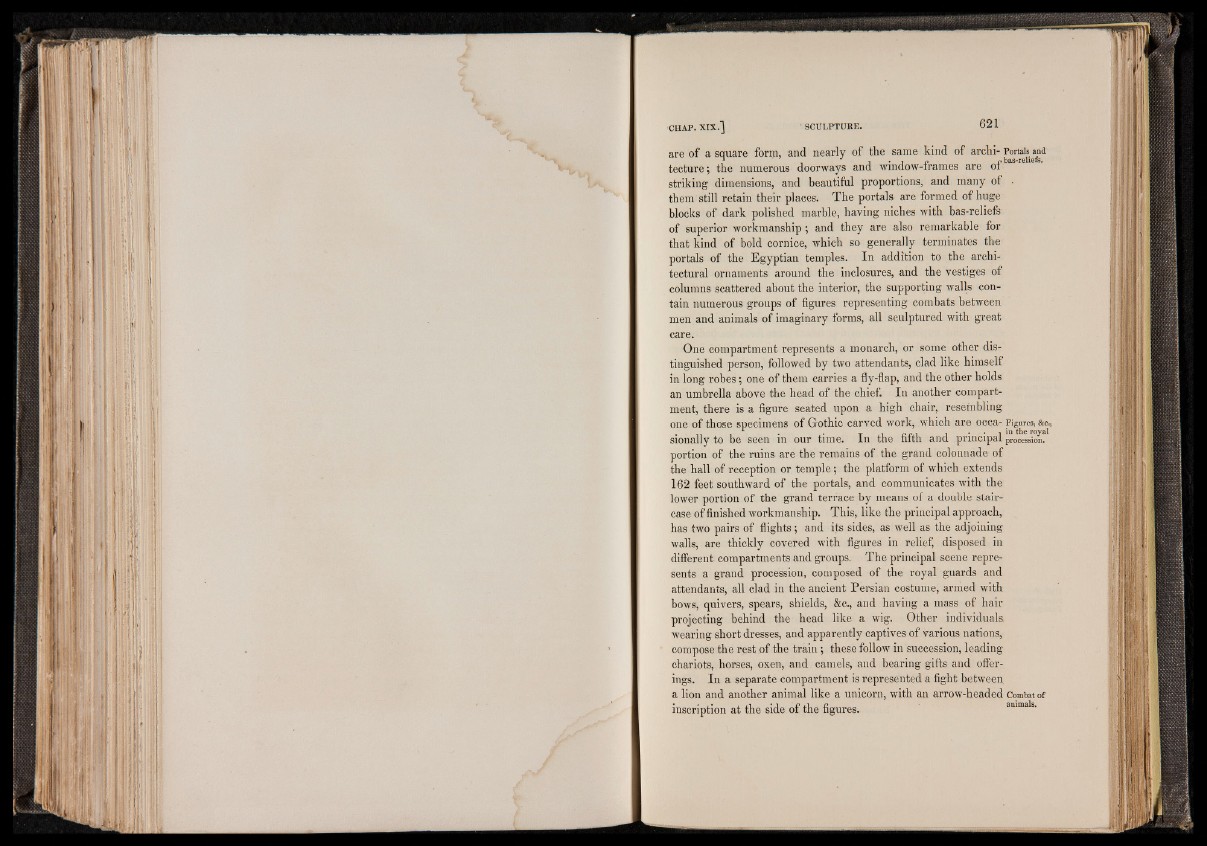
are of a square form, and nearly of the same kind of archi- Portals and
/ , • -i n n bas-reliefs. tecture; the numerous doorways and wmdow-irames are ot
striking dimensions, and beautiful proportions, and many of •
them still retain their places. The portals are formed of huge
blocks of dark polished marble, having niches with bas-reliefs
of superior workmanship; and they are also remarkable for
that kind of bold cornice, which so generally terminates the
portals of the Egyptian temples. In addition to the architectural
ornaments around the inclosures, and the vestiges of
columns scattered about the interior, the supporting walls contain
numerous groups of figures representing combats between
men and animals of imaginary forms, all sculptured with great
care.
One compartment represents a monarch, or some other distinguished
person, followed by two attendants, clad like himself
in long robes; one of them carries a fly-flap, and the other holds
an umbrella above the head of the chief. In another compartment,
there is a figure seated upon a high chair, resembling
one of those specimens of Gothic carved work, which are occa- Figures, &c.,
T i r » p i i • • l in the royal sioiially to be seen iti our time. In the tilth and principal procession.
portion of the ruins are the remains of the grand colonnade of
the hall of reception or temple; the platform of which extends
162 feet southward of the portals, and communicates with the
lower portion of the grand terrace by means of a double staircase
of finished workmanship. This, like the principal approach,
has two pairs of flights; and its sides, as well as the adjoining
walls, are thickly covered with figures in relief, disposed in
different compartments and groups. The principal scene represents
a grand procession, composed of the royal guards and
attendants, all clad in the ancient Persian costume, armed with
bows, quivers, spears, shields, &c., and having a mass of hair
projecting behind the head like a wig. Other individuals,
wearing short dresses, and apparently captives of various nations,
compose the rest of the train; these follow in succession, leading
chariots, horses, oxen, and camels, and bearing gifts and offerings.
In a separate compartment is represented a fight between
a lion and another animal like a unicorn, with an arrow-headed Combat of
inscription at the side of the figures. ammais.